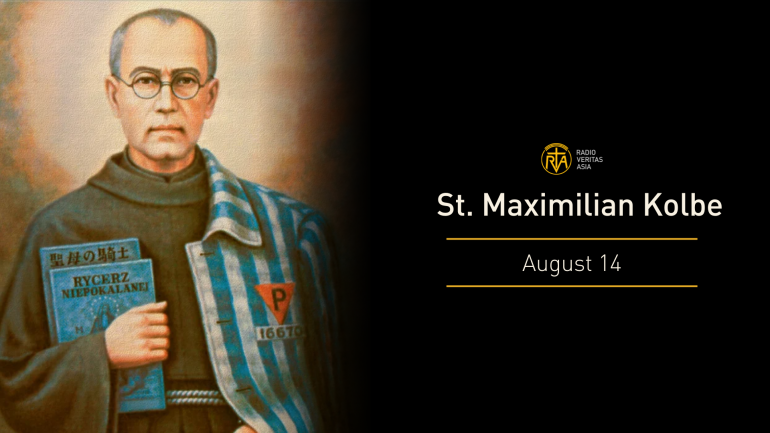St. Maximilian Kolbe: How holiness blossomed even in a death camp

We remember today the saint who founded the largest Catholic publishing center in Europe during his time and was eventually martyred in Auschwitz—the Knight of the Immaculata, Saint Maximilian Kolbe.
Born in Poland in 1894, Maximilian received a vision of the Immaculate Virgin when he was about ten years old. Mary presented her with two crowns: white and red. Understanding that they represent chastity and martyrdom, he accepted them both.
At sixteen, he and his brother Francis secretly traveled from Russia to the Austrian partition of Poland to join the Franciscan order. While a seminarian in Rome, Maximilian founded the Catholic evangelization movement Militia Immaculatae (MI) on October 16, 1917.
MI focused on encouraging every person to make a total consecration to the Immaculate Virgin Mary. Through this, they aim to bring about the reign of the Sacred Heart of Jesus and dispel the growing militant naturalism of the International Freemasonry, whose activists constantly blaspheme in Vatican City.
After his ordination to the priesthood, Maximilian went home to Poland in 1919. Despite contracting tuberculosis upon returning, he chose to spread his movement instead.
In January 1922, they began publication of the monthly magazine Knight of the Immaculata. It saw such rapid growth that Maximilian decided to build a large apostolic center near Warsaw called Niepokalanow or the "City of the Immaculata."
At their peak, they achieved a monthly circulation of one million and a daily newspaper reach of around 230,000. Maximilian even founded another city in Japan and had plans to build one in every nation that would publish in various languages.
Maximilian returned to Poland in 1936 to get advanced tuberculosis treatment and reassume the direction of the city, which had expanded from 18 members to over 650, making it Europe’s largest Catholic publication house at the time.
Nazi forces overran Poland in 1939. Maximilian was arrested under general suspicion but was released after three months.
Following his release, Maximilian used his monastery to provide sanctuary to approximately 3,000 Polish and 1,500 Jewish refugees. Their newspaper also started to print anti-Nazi sentiments.
When their criticisms reached the Nazis, Maximilian was arrested again and sent to the Auschwitz concentration camp. His spirit unburdened, he continued his priestly ministry even behind bars. Despite facing constant beatings as a consequence of his actions, he did not stop to hear confessions, smuggle food, and celebrate Mass.
When a prisoner escaped Auschwitz, ten men were randomly selected to die as punishment. Maximilian was luckily spared. However, he chose to volunteer in place of Franciszek Gajowniczek, a married man with young children.
Maximilian and the nine chosen prisoners were locked up to starve to death. Instead of simply waiting for his end to arrive, he led prayers to Our Lady and guided his cellmates to prayerful meditation.
According to reports, Maximilian was the last man standing. When the guards finally gave him a lethal injection of carbolic acid, he calmly raised his left arm and accepted his death. He died on August 14, 1941, and was ceremonially cremated the next day.
St. Paul VI beatified Maximilian in 1971 and St. John Paul II canonized him in 1982, referring to him as a "martyr of charity" and "patron of our challenging century." The Catholic Church venerates him as the patron saint of media communications and the chemically addicted.
Gajowniczek, the man he saved in Auschwitz, was present for both his beatification and canonization.
St. Maximilian Kolbe’s life is a testament to how holiness can blossom even in the face of adversity. Tuberculosis did not stop his work of evangelization. The threat of the Nazis did not kill his publication. He welcomed death like an old friend from his childhood. He showed us how far a saint can go by following Jesus while being guided by His blessed mother.
Radio Veritas Asia (RVA), a media platform of the Catholic Church, aims to share Christ. RVA started in 1969 as a continental Catholic radio station to serve Asian countries in their respective local language, thus earning the tag “the Voice of Asian Christianity.” Responding to the emerging context, RVA embraced media platforms to connect with the global Asian audience via its 21 language websites and various social media platforms.












